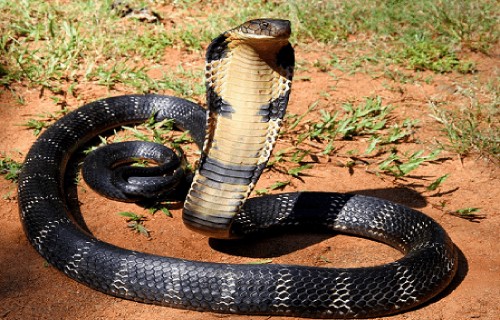
We hope that each of you, our readers, will enjoy and appreciate this article we present you about these 5 Special Species of Sumatra. It was certainly our pleasure to compile the data for you. May it provide you with both education and inspiration.
Certainly, these few creatures herein represent only a portion of the marvels found throughout the area. It’s our belief, though, that these few examples serve as excellent representatives of the wide variety of life here. Read on for more information.
Wallace’s Flying Frog
Wallace’s Flying Frog
- Leading off this article abpout 5 Special Species of Sumatra we present the remarkable amphibian known by the name of the Wallace’s Flying Frog.
- The very name applied to the animal serves to indicate just how extraordinary it is. The common term derives partly from its unique ability, and also from the name of the individual that first discovered it. That was British biologist, Alfred R. Wallace.
- The generally used named for this minuscule marvel of Nature remains much easier to remember than its scientific name, however. That tongue-twisting term, typically only used by professionals, is that of Rhacophorus nigropalmatus.
- Not surprisingly, the name’s somewhat misleading, since the animal does not actually fly. It does, however, glide short distances from tree to tree. Though not, again to one’s astonishment, the only known frog to possess this ability, it’s among the largest.
- The exact extent of the population of the Wallace’s Flying Frog continues to elude researchers. This occurs due to the fact that sightings happen infrequently. Experts also remain undecided as to whether this indicates a small population or not.
- For the moment, pending more information, the IUCN lists the remarkable and distinctive creature as Least Concern. This status, while subject to revision, presently appears on the organization’s Red List of Threatened Species.
- The fascinating animal nonetheless faces several clear threats to its continued existence. Ongoing habitat loss now represents an imminent danger to it. Its greatest peril, however, now comes in the form of the effects of escalating climate change.
Wallace’s Flying Frog Physical Description
The impressiveness of the aptly-named Wallace’s Flying Frog does not originate solely with its aerial abilities. Its size and appearance both also serve to merit interest in the wonder. In fact, it constitutes a slightly larger than average variety of frog.
The amazing amphibian further displays the physiological characteristic of sexual dimorphism, like many of its kin. In its specific case, this trait manifests itself in the fact that females, averaging 3.9 in (10 cm) in length, attain a slightly greater size than males.
Most people generally consider the Wallace’s Flying Frog to be highly photogenic, and rightfully so. The colors the animal presents typically include a bright green on the back. It also, however, usually displays either yellow or a pale white on the underside.
It also evolved over-sized webbed feet that it utilizes to glide from tree to tree. The eyes, meanwhile, grow quite large, and possess striking horizontal pupils. Not stopping there, the species also has large toe pads, which help it cling to trees as it lands from its flight.
- Kingdom: Animalia
- Phylum: Chordata
- Class: Amphibia
- Order: Anura
- Family: Rhacophoridae
- Genus: Rhacophorus
- Species: R. nigropalmatus
Wallace’s Flying Frog Distribution, Habitat, and Ecology
The remarkable Wallace’s Flying Frog, in fact, actually inhabits a moderately broad section of the world, at least when compared to related species. That habitat range, as it currently stands known, extends from the Malay Peninsula to western Indonesia, in Asia.
Within that somewhat extensive zone of habitation, though, it displays quite specific preferences for where it appears. To the knowledge of researchers, it only inhabits regions of rainforest, for starters. Even there, though, it specifically limits its range.
The amphibian does not seem to reside at altitudes of greater than 1,970 ft (600 m) above sea level. Yet another habitat requirement remains the local presence of either small pools of fresh water or slow-moving streams. These it requires for its evolved breeding habits.
The Wallace’s Flying Frog spends the majority of its life in the trees, descending only to mate and lay eggs. Its known diet, meanwhile, consists entirely of a variety of small insects. Finally, its only known natural predators seem to be various arboreal snakes.
Pikachu Nudibranch
Pikachu Nudibranch Facts
- The next creature appearing in this listing of 5 Special Species of Sumatra is the amazingly evolved wonder known as the Pikachu Nudibranch.
- This eye-catching marvel of Nature frequently goes by the equally attention-grabbing common name for good reasons. For the moment, unlike the majority of species around the world, it has no other generally accepted common name.
- Among scientific professionals, however, such as researchers, it’s typically referred to by its official name. That term, though remains somewhat hard for the layman to pronounce, as often occurs. That’s because it bears the moniker of Thecacera pacifica.
- It further recieved that slightly tongue-twisting technical name due to the work of the Danish researcher, Rudolph Bergh. He recorded the first official recognition of the animal as a separate and distinct species. This action noteworthy occured in 1883.
- For the moment, the Pikachu Nudibranch appears to be maintaining a population base that’s both stable and sufficient. This trend also seems to hold true throughout the entirety of its native range. The IUCN, therefore, currently has no listing for it.
- The intriguing Gastropod nevertheless must be considered to be facing at least some potential threats to its existence. These, though, consist of the same perils facing most species today. The greatest of there, however, likely consists of climate change.
Pikachu Nudibranch Physical Description
The amazing Pikachu Nudibranch easily draws the eye of those fortunate to encounter it in Nature. The remarkable Mollusc does so, however, for reasons unrelated to sheer size. That’s because this marvel of evolution developed as smaller than many of its kindred.
In this respect, it also stands out from many other creatures in the world. That’s true since the tiny wonder qualifies as a hermaphrodite. Thus, individuals remain both male and female. The physiological trait of sexual dimorphism, therefore, does not apply to it.
In terms of pure size, though, individuals vary widely in this respect. That principally occurs due to various environmental facctors. An average-sized mature adult, though, measures roughly 0.8 (2 cm) in length. Exceptional specimens do nevertheless occur, yet remain rare.
It’s the overall physical appearance of the Pikachu Nudibranch, though, that garners most of the attention. As its very name suggests, in the minds of many it bears a striking resemblance to the Pokémon character named Pikachu. Its one of Nataure’s many coincidences.
That’s due to the overall color scheme. The majority of the small body manifests as a translucent yellow to yellowish-orange color. Its several sheaths, however, present black edges with blue patches. Black tips also appear around the gills, with blue at the tip of its tail.
- Kingdom: Animalia
- Phylum: Mollusca
- Class: Gastropoda
- Order: Nudibranchia
- Family: Polyceridae
- Genus: Thecacera
- Species: T. pacifica
Pikachu Nudibranch Distribution, Habitat, and Ecology
Fortunately, both for the Pikachu Nudibranch itself, and those who appreciate Nature, it evolved as endemic to a relatively broad swathe of the globe. Not surprisingly, though, that area happens to be well known for its abundance of impressive marine species.
More precisely, evidence indicates that the intriguing animal inhabits a wide section of the Indian Ocean. It also appears in many regions of the western Pacific. For the moment, research indicates that it never existed outside of that range. Research is ongoing, however.
This impressive little creature also seems to prefer the shallower depths. That’s the case for many of its relatives. Due to that tendency, it’s almost always found comparatively close to the shoreline. This holds true whether that’s the shoreline of the continent or an island.
Some of the regions where it’s most frequently spotted include the African coast, Vanuatu, and Indonesia. It’s also been spotted in smaller numbers in the Gulf of Mexico. In all areas in which it appears, though, it’s never been spotted at depths greater than 62.3 ft (19 m).
Like the majority of its related species, the Pikachu Nudibranch evolved as carnivorous in nature. In its specific case, due to its sheer size, its prey remains small. This most commonly consists of locally available quantities of algae and plankton, as well as small jellyfish.
Researchers currentlyknow very little about many aspects of its life. That includes its lifespan. For similar species, however, this ranges from a few weeks to a few years. One thing that scientists do known, though, is that, like many other nudibranches, it quite toxic.
King Cobra

King Cobra Facts
- Listing in the third spot among our choices for inclusion in this collection of 5 Special Species of Sumatra, the King Cobra does so only due to random selection.
- The truly impressive reptile remains best known for one outstanding fact. That’s the amaizng statistic that it ranks as the longest known species of venomous snake known to man. Despite its great length, however, it remains rather surprisingly light.
- The common name of this reptile creates a great deal of confusion, however, being quite deceptive. That’s because, regardless of its other impressive attributes, it does not qualify as a true cobra. True cobras have decidedly different attributes.
- It nevertheless remains worthy of respect. In point of fact, this remarkable animal actually forms the sole member of its own genus. No other known species even come close to its physical qualities. This fact alone also makes the snake of particular interest.
- This fascinating snake also remains worthy of being considered extremely dangerous to humans if provoked. This status holds true due to a combination of two factors. Those are the toxicity of its venom, and the sheer quantity of venom produced.
- For the moment, the IUCN lists the amazing King Cobra as Vulnerable. That status is reflected on the organizations’s Red List. Habitat loss forms a grave peril, given its region, of course. It also faces the threat of climate change, like other species.
King Cobra Physical Description
Quite remarkably, the beautiful but deadly King Cobra averages about 13 ft (4 m) in length. Exceptional individuals, however, sometimes attain a length of a much as 18.5 ft (5.6 m). Both measurements far outdistance any other known venomous snakes, though.
Despite its great length, however, the extremely dangerous snake remains a relative lightweight reptile. Surprisingly, this reptile typically averages no more than 13 lb (6 kg) in weight. In point of fact, the heaviest King Cobra on record only weighed 26 lb (12 kg.).
In color, the fabulous reptile also typically presents either one of several distinct color patterns. This trait further separates it from most related creatures. These patterns include either an olive-green, tan or black, with yellow bands crossing the body along its length.
- Kingdom: Animalia
- Phylum: Chordata
- Class: Reptilia
- Order: Squamata
- Family: Elapidae
- Genus: Ophiophagus
- Species: O. hannah
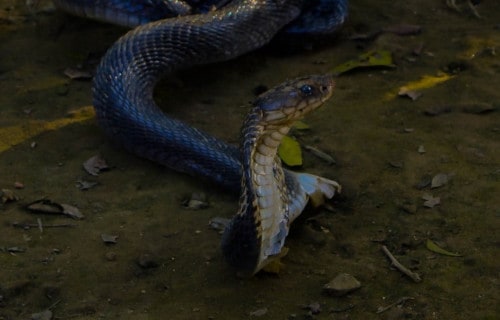
King Cobra Distribution, Habitat, and Ecology
The mighty King Cobra evolved as endemic to the forest regions of Southeast Asia. This quite impressive range includes India, Indonesia, and the Philippines. Within that range, individual specimens typically prefer to inhabit rather dense highland forests.
The fabulous creature also primarily preys on other snakes. However, most individuals will also consume small invertebrates. The King Cobra remains classified as diurnal, and primarily hunts during the day. During the night, it remains concealed, unless disturbed.
Despite its exaggerated reputation, this reptile isn’t typically aggressive unless provoked. When this happens, though, it will raise as much as one-third of its body length into the air. Subsequent to that, it will also flatten its head in preparation to strike.
This species also remains capable of delivering multiple envenomings in a single encounter. This further makes the incredible King Cobra stand out, since many, although certainly not all, other poisonous snakes lack this ability to repeatedly poison its victims.
In addition to its other unique attributes, it represents the only known snake that builds nests for its eggs. These it builds using dry leaves and twigs. One mating produces anywhere from 7-43 eggs. Those that survive to adulthood live an average of about 20 years.
Moon Orchid
Moon Orchid Facts
- Here we give you the only flora making an appearance in this compilation of 5 Special Species of Sumatra, the stunning Moon Orchid.
- This gorgeous Angiosperm, with a nature that might surprise you, most frequently goes by the common name listed here. It does have a few other, alternate general names, though, These include the terms moth orchid, and also the anggrek bulan.
- Among scientific professionals, such as researchers, it goes by a far different name, however. That term, though, is a bit of a mouthful for non-professionals. That’s because the marvel also bears the tongue-twisting moniker of the Phalaenopsis amabilis.
- The flora received the official name that it currently holds due to the efforts of the German-Dutch botanist, Charles Ludwig de Blume. It previously held other names, assigned by other researchers. His work, however, changed it to the current one in 1825.
- For now, the magnifent creation of Nature appears to be maintaining a population base that’s both stable and sufficient. This fortunate fact further seems to hold true throughout the entirety of its range. The IUCN, therefore, has no current listing for it.
- The dazzling Moon Orchid nonetheless does face at least a few potential threats to its continued existence. Illegal collection of the wonder from its natural habitat continues, despite efforts to curb the practice. Invasive species also pose a potential threat.
- Factors such as habitat degradation or outright destruction pose further dangers. Both of these occur chiefly due to the actions of man, either directly or indirectly. Likewise, the accelerating effects of climate change also threaten it, like most other species.
Moon Orchid Physical Description
The aptly-named Moon Orchid easily impresses those who encounter it with its celestial beauty, to be ceertain. Yet, sheer visual appeal alone isn’t the only remarkable characteristic of this marvelous Angiosperm. The gorgeous flora also has a fascinating physical nature.
That’s because this particular variety of orchid evolved as what botanists call epiphytic and lithophytic. That means that this stunner grows not in the soil, but either on the surface of a host plant, or on rocks. Nature never fails to amaze with its wondrous resourcefulness!
Those incredible roots occasionally attain lengths of up to 3.3 ft (1 m). These also develop extremely flattened in shape. Each of these vital structures additionally develops as quite narrow. Each typically only measures about 0.12 – 0.16 in (3 – 4 mm) in overall width.
Its foliage, meanwhile, also merits notice. Individual plants produce 2 – 8 distinctive leaves apiece. The leaves generally present either an egg-shaped or oblong structure. Lengths further average from 5.9 – 12 in (15 – 30 cm). Widths, though, average 1.6 – 2.8 in (4 – 7 cm).
The stems each Moon Orchid produces from which to display its blooms averages 3.9 – 12 in (10 – 30 cm) in length. This structure, however, typically remains concealed by the bases of the leaves. Each branch also produces between 2 – 20 long-lasting flowers on short stalks.
But, it’s the blooms that easily garner the most interest. These average 2.4 – 2.8 in (6 – 7 cm) in length, and 2 – 3.1 in (5 – 8 cm) in width. The labellum, which attracts its pollinators, displays white, with yellowish and red markings. The blooms, though, show brilliant white.
- Kingdom: Plantae
- Phylum: Tracheophytes
- Class: Angiosperm
- Order: Asparagales
- Family: Orchidaceae
- Genus: Phalaenopsis
- Species: P. amabilis
Moon Orchid Distribution, Habitat, and Ecology
Fortunately for the mesmerizing Moon Orchid, it evolved as native to a comparatively wide section of the globe. That’s due to the fact that populations of the beautiful plant appear in both parts of Asia, and the continent of Australia. That dispersal gives it an advantage.
Within its concentration in Asia, it appears from Palawan Island, in the Philippines, to Borneo. It also lives in parts of Java and Sumatra. At least three recognized subspecies also inhabit much of the same range. In Australia, it mainly lives in Paluma Range National Park.
Though exceptions occur, this marvel displays preferences for its choice of habitat. That’s due to the fact that the vast majority of specimens develop in regions of extremely precise ecological factors. These consist of rainforest areas, with high humidity and good air flow.
It’s also precise concerning other factors. Given its somewhat unusual nature, it requires a physical host to cling to. In its native state, this most often consists of trees. It does, however, sometimes appear on stones. Yet it rarely clings to man-made structures in its area.
Like most plants, the Moon Orchid accomplishes its reproduction via pollination. Also like others of its kind, it achieves this through the actions of insect. In its case, this mainly occurs due to the visits of local bees. Interestingly, though, its mainly carpenter bees that visit.
It also plays an important cultural role in parts of its range. In Indonesia, it represents one of three official National Flowers. The plant holds similar importance in other regions as well, however. It’s also the official flower of Kota Kinabalu, the capital of Sabah, Malaysia.
Malaysian Flying Fox
Malaysian Flying Fox Facts
- Closing out this compendium of the 5 Special Species of Sumatra comes the creature that fascinaes many individuals, the Malaysian Flying Fox.
- The truly remarkable creature most commonly known by the deceptive term represents a species of megabat endemic to Southeast Asia. The astounding mammal also remains one of the largest known species of bat on earth.
- The impressive creature also goes by alternate common names, though. These include such terms as the kalang, and the greater flying fox. Its scientific name, however, remains the somewhat difficult to pronounce Pteropus vampyrus.
- Like all fruit bats from the Old World, this remarkably impressive creature possesses a characteristic that surprises many people. To the great surprise of many individuals, the amazing animal lacks the ability to echolocate like other bats.
- Given its great size, however, one particular fact remains encouraging to note, This holds true due to the fact that this astonishing species has an entirely herbivorous diet. Otherwise, its great size could pose a legitimate threat to livestock.
- Most unfortunately, the population numbers of the fabulous Malaysian Flying Fox appear to be diminishing rapidly. Consequently, the IUCN currently lists the scientifically impressive animal as Near Threatened. This appears on its Red List.
- Climate change and habitat loss presently pose the greatest threats to its continued existence. Thankfully, several concerted conservation efforts remain underway. But, these unfortunately continue to be complicated by the actions of man.
Malaysian Flying Fox Physical Description
The Malaysian Flying Fox stands out from related species by virtue of its physical size. The enormous mammal represents one of the largest known species of bat on earth. In point of fact, it develops an impressive average wingspan measuring as much as 5 ft (1.5 m).
Much like many types of mammals, it displays a slight degree of sexual dimorphism. In its case, this presents itself in terms of the nature of its fur. This holds true due to the fact that the fur of the males generally tends to be longer and thicker than that of the female.
This remarkable animal also attains an astonishing weight for its type of creature. Amazingly, mature adult specimens weigh an average of 2.4 lb (1.2 kg). As a result of this, it sometimes appears slow in flight. Nevertheless, it’s renowned for being highly maneuverable.
In a coincidence of evolution, the Malaysian Flying Fox also has a somewhat fox-like face. This coincidental resemblance serves as the origin of the common name. Much of the large body also has a covering of long, thick fur. This generally displays a reddish-brown color.
- Kingdom: Animalia
- Phylum: Chordata
- Class: Mammalia
- Order: Chiroptera
- Family: Pteopodidae
- Genus: Pteropus
- Species: P. vampyrus
Malaysian Flying Fox Distribution, Habitat, and Ecology
The sincerely amazing Malaysian Flying Fox known habitat range apparently covers a fairly large area of the world. This holds true due to the fact that this extends from the Malay Peninsula to the Philippines, Sumatra, Borneo, Java, and even Timor.
The mammal also appears to be comparatively adaptable in its habitat. As a result, it sometimes appears at elevations of as much as 4,490 ft (1,370 m). Though it prefers the higher elevations, the mammal also sometimes inhabits lower regions when necessary.
Across some portions of its habitat range, this magnificent creature even lives in a most unusual range for its type of creature. This holds true since it even appears along coastlines. However, it does show a decided preference for areas further inland.
In point of fact, the marvelous bat most commonly lives in regions such as dense mangrove forest, primary forests, coconut groves, and even large fruit orchards. Also, the groupings in mangrove forest usually remain smaller than those in other areas.
But, the continually surprising Malaysian Flying Fox evolved yet another characteristic that amazes the casual observer. That’s the tendency of the fascinating mammal to often live in extremely large colonies. While many bats do, it takes this to another level.
This mammal comes together in groups perhaps more properly called super-groups. Some of these colonies have been known to number as many as 20,000 individuals. Given its particular feeding habits, it exclusively consumes flowers, nectar, and various fruits.
5 Special Species of Sumatra
We hope that each of you thoroughly enjoyed reading, and hopefully learning from, this article we’ve written about these 5 Special Species of Sumatra. It’s also our sincere hope that doing so has left you with either a new or renewed appreciation for such wonders of Nature.
Unfortunately, many other such species around the world now find themselves facing threats to their continued existence. Many of those dangers, in fact, stem from the actions of mankind. We must do all we can to protect and preserve them all for the future.
Check out our other articles on 4 Lovely European Lakes, Spectacular Halloween-Appropriate Species, 7 Beguiling Insects of Bulgaria, Earth’s Countless Amazing Amphibians
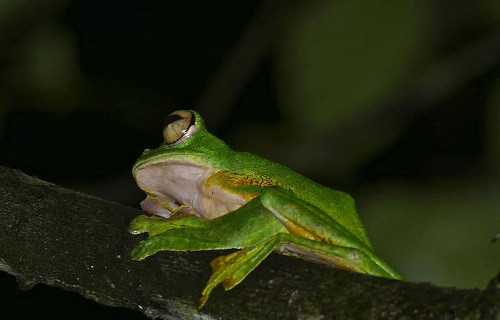
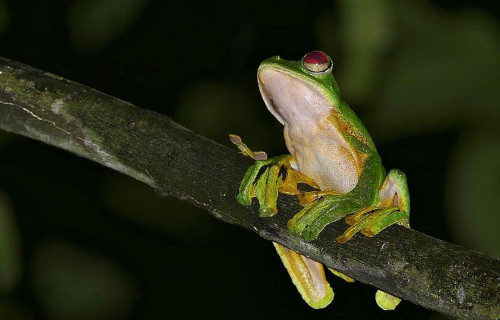
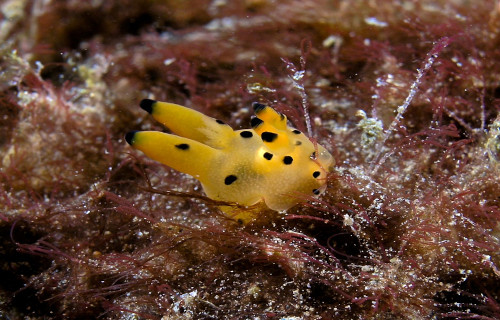
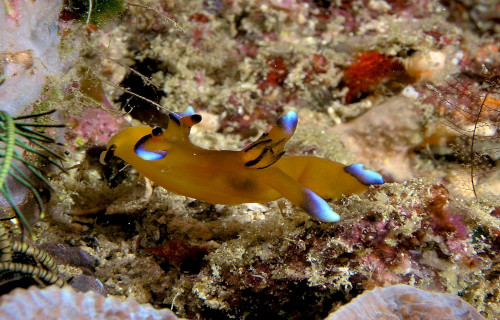
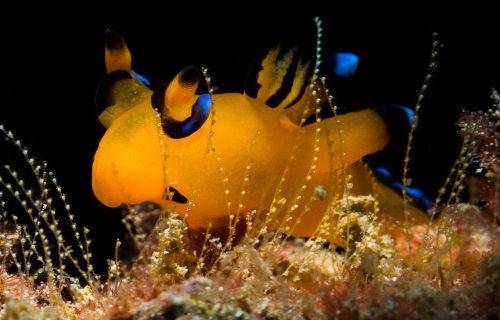

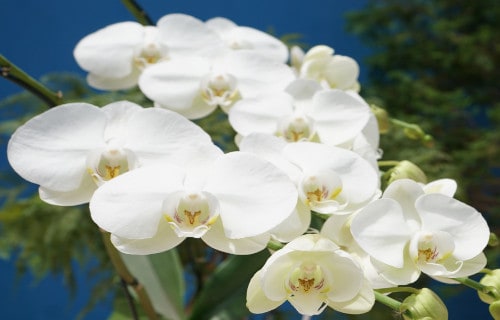
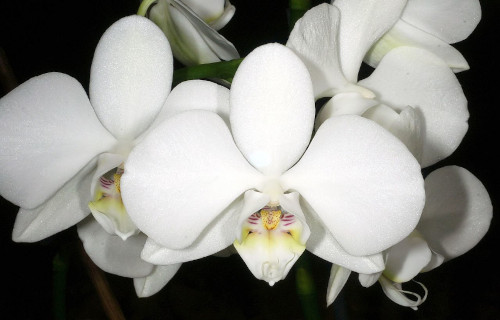
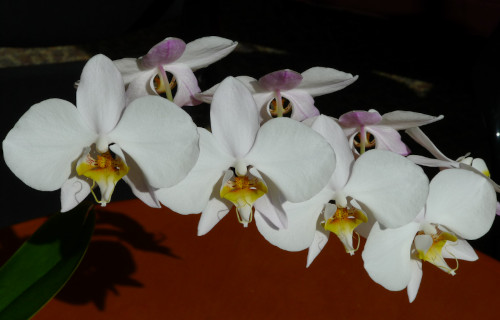
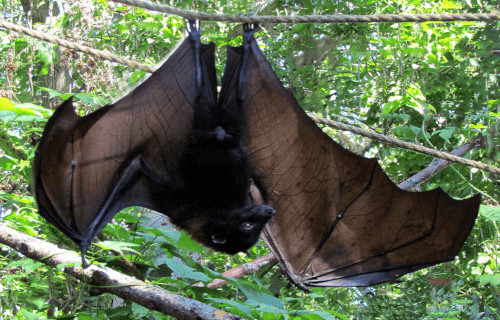
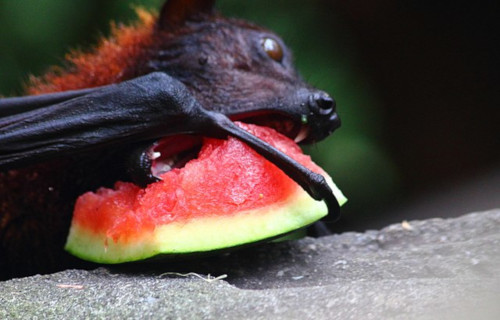









Leave a Reply